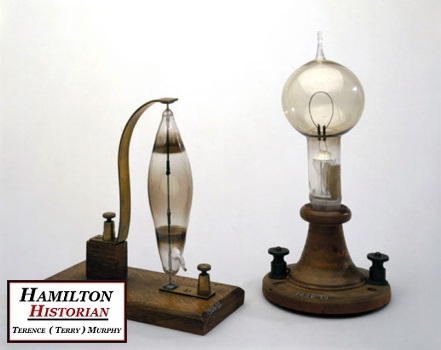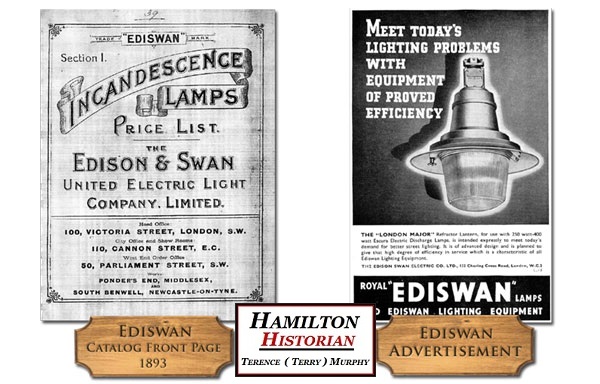PRESENTATION BY MR. WATSON OF JERSEY COWS TO HIS TENANTRY.
(From Hamilton Advertiser, 11th June, 1892.)

Thursday was a memorable day at Earnock—-the occasion being the presentation by Mr. Watson Of Jersey Cows To each of his tenants. The conception of the present, like the presentation itself, is quite unique, and is another evidence of kindly interest which the genial and light-hearted laird takes in all around him. In order to make the event with due ‘eclat, he invited a large and influential party to the mansion-house, and another to Hillhouse, the Home Farm, where the presentation took place. The Guests at the mansion-house were;—-Lord Provost Muir, Glasgow ; Mr. J. C. Forrest of Udston ; Bailie Wylie, Treasurer Keith, Colonel Austine, Mr. W. A. Dykes, Dr. Lennox, Commander Mc Hardy, Dr. Louden, Mr. W. Brown, Mr. J. C. McKay, Mr. Alex Watt, Rev. Dr. Thomson, Rev. Mr. Paterson, Mr. D. Patrick, Colonel Lynch, Mr. W. Naismith, Hamilton; Mr. More, Mr. John Methven, Mr. Simpson, Mr. John Grieve, Mr. D. Mitchell, Mr. David Thomson, Edinburgh ; Mr. Thomson, Clovenfords ; Mr. James Reid, Auchterarader ; Mr. C. M. Williamson, Mr. A. Buchan, Mr. A. Strain, Mr. Robert Young, Mr. A. H. Simpson, Mr. D. Graham, Mr. Hugh Brown, Mr. John Connal, Mr. Robert Anderson, Mr. Robert Cameron, Mr. D. McLellan, Mr. J. Livingston, Mr. W. Stewart, Mr. J. Wallace, Glasgow ; Colonel Harington-Stuart of Torrance; Mr. Colin Dunlop of Quarter ; Mr. Alex. Cullen, Mr. T. Watson, Motherwell ; Mr. McQueen, Rev. Mr. Harper, Wishaw ; Mr. T. Cowan, Greenock, &c. Not the least auspicious factor in the day’s proceedings was the magnificent weather, under the brightness of which everything was seen to the utmost advantage.
On arriving at Earnock House, the company was received by Mr. Watson and Mr. J. Watson Junr. They then, under their guidance, walked around the lawns, &c., where the blaze of beauty of the shrubs, trees, and especially the rhododendrons, was highly appreciated, and struck every observer ; the garden was next visited, and the stables. Getting into carriages and wagonettes, the party then drove to Midstone Hall, the mansion where Mr. Watson is just completing as the residence of his son, Mr. T. W. Watson, W.S. The grounds and show of rhododendrons here are one of the sites of the neighbourhood, and the blooms will ultimately rival if they do not excel those at Earnock. The house, which may be said to have been built if merely altered, is most unique in character, and is a standing testimonial to the artistic skill and zeal of Mr. Alexander Cullen, Architect. Mr. T. W. Watson received the party, and conducted them through the principal rooms—the most interesting of these being the billiard room. The walls of this latter are covered with tiles (by Doulton, of London) on which are depicted by a masterly hand scenes from novels of Sir Walter Scott. After partaking of refreshments, the party visited the well-known Swiss chalet, and then drove direct to Earnock House. Here, In the large dining-room, they sat down to a most sumptuous luncheon—the only drawback to the thorough enjoyment of which was the short time which the fulfilment of the subsequent important duties of the day allowed for it’s consumption. After lunch, and before proceeding to Home Farm, Lord Provost Muir of Glasgow, in brief but most choice and appropriate terms, proposed the health of the host. He alluded to the generous character of Mr. Watson, to the almost princely hospitality they had partaken of, and to the great beauty of the place, which could hardly be excelled anywhere. The toast was pledged most heartily.
THE TENANTRY LUNCHEON.
The Hay-Shed at Home Farm was converted into a veritable bower, the wooden walls being hidden form view by a profusion of fir branches relieved with twigs of broom. Along with the brightly set tables, and the magnificent potted plants with which they were set off, the ensemble was artistic and pleasing, and the well-shaded interior was a grateful retreat from the broiling sun outside. The table was loaded with choicest viands and richest wines and other liquors, and nearly eighty ladies and gentlemen were present. Mr. John Watson, Junr., occupied the chair, and Mr. T. W. Watson was the croupier. The dinner was purveyed by Mr. Campbell, of the Commercial Hotel, and, as already stated, was of a most recherch’e character, while the waiting left nothing to be desired. After ample justice had been done to good things,
THE CHAIRMAN gave “The Queen,” which was duly pledged.
Mr. W. McGhie, Kingston Cottage, next proposed “The Laird of Earnock.” He frankly confessed, in looking round that table, he had never spoken to such a company in his life. Beginning with “Adam” (Mr. Nicol)—(Laughter)—they had all ages and sexes represented, and they were met on a very memorable occasion. (Cheers.) As to his toast, the name of John Watson was a household word—not in Hamilton only, but throughout Scotland. (Cheers.) Mr. Watson proposed introducing some Jersey cattle into the district for the benefit of his friends on the Estate, and he was sure it must be very pleasant for each and all of them to have such a good man for a laird. (Cheers.) It was a noble thing to be a good landlord, and it was just a good thing to have a good tenant. He had no doubt friendship begot friendship. Mr. Watson was a man who had come through the vicissitudes of the world with honour. He had risen up the ladder step by step—he had not been born with a silver spoon in his mouth ; and, but for his indominable will, his integrity of purpose and desire to do good to his fellow-men, he could never have attained to his present position. (Cheers.) He asked them to search their minds with regard to noblemen of Lanarkshire, and say frankly and fairly if there was a single one who had done more for his estate and his fellow-men. Perhaps he was speaking a little personal. They would be saying, “McGhie, you have handled many a good dollar.” (Laughter.) He had found the estate almost in ruins, and made it what it was. Every man was said to be a philanthropist who made two blades of grass grow where only one grew before, but Mr. Watson had made three grow where one only existed before. If they had only four other John Watson’s in the Middle Ward, they would all be richer and happier men. (Cheers.)
The CHAIRMAN responded in the unavoidable absence of his father, who was entering friends up the way, but who would be there shortly. They had come there on an occasion which would probably last in their memories, viz., that of presenting to the tenantry a herd of Jersey cows. A celebrated statesman had promised to present ” three acres and a cow.” (Laughter.) Well, the cows were there, but the acres were not. He was sure his father would be well pleased to see them all when he came down, and he begged to thank them in his name and his own for the way in which they had received the toast which Mr. McGhie had proposed. (Cheers.)
Mr. T. Watson gave “The Tenantry on his Father’s Estate.” Mr. McGhie had been good enough to say that his father was a very good landlord, but he thought he was equally fortunate in having so many good tenants. He hoped that they would before long rear a good herd of cattle from Jerseys which his father was going to present them, so that before long this side of the country might be famed for them. He believed there was no better class of milch cow for richness of their milk, and they were very beautiful little animals. He was sure they would drink to the health of the wives of the tenantry as well as that of themselves. (Cheers.)
Mr. Smith, Little Earnock, replied, and hoped that Mr. Watson, their landlord, might have a long life and continued prosperity.
Mr. Adam Nicol, Neilsland Cottages, gave the health of Mr. Watson, Junr., of Earnock, who, in reply, said he would always do the best he could for the tenantry.
Mr. Simpson, Hillhouse Cottages, proposed “The Croupier,” and as a latter was responding, the party from the mansion-house entered, and the proceedings, which had been enlivened by the singing of Messrs. Livingston, Simpson (Glasgow), and Simpson (Hillhouse Cottages), were closed with the singing of ” Auld Lang Syne. ” Three pipers from the Barracks played appropriate music Outside.
THE PRESENTATION OF THE COWS.
Mr. Watson of Earnock shortly addressed the company, stating that it casually happened a few years ago that he got two or three Jersey cows to give away to some tenants, while four months ago it struck him that he would make a present of each one to each of his agricultural tenants. (Cheers.) He hoped everyone that got a cow would be pleased, and that they would have good luck with it. There were four widows on the estate, and he wished them each to get a three-year-old. The pamphlet with which they had been supplied taught them not to be harsh with the cows, and that once they were acclimatised they would be as hardy as an Ayrshire in the neighbourhood.
The cows were then distributed by lot, the widows referred to by Mr. Watson having a special “lucky bag” for themselves, from which they each drew a number corresponding with that of the animal they were to get. The same rule was followed with others. Mr. Watson, assisted by Mr. Reith, superintended the draw, and the proceedings were watched with interest by onlookers. After the draw, the cows were led round the ring by their new owners, and with this, and three cheers for Mr. Watson and “one more” for Mrs. Watson, the gala day ended.
The following were the recipients of the Cows :—
Mrs. Henderson, Townhill, “Rosette.”
Mrs. Smith, Muirhall, “Belle Gusette.”
Mrs. Law, Meikle Earnock, “Les Bessieres.”
Mrs. Forrest, Earnock Muir, “Lucy 2nd.”
Mrs. Bryson, Annsfield, “Rosalie Pet.”
Mrs. Paul, Hamilton, “Richmond Baroness.”
Mrs. Maxwell, Torheads, “Bettie 2nd.”
Mrs. Chalmers, Eddlewood Farm, “Star of the West.”
Mrs. McDonald, Meikle Earnock, “Lux.”
Mrs. Hamilton, Peacock Cross, “Potiron’s Beauty.”
Mrs. Baird, Highstonehall, “Buttercup.”
James Craig, Meikle Earnock, “Boulette.”
Mrs. Berry, Whitecraigs, “Miss Julia.”
Mrs. D. Strachan, Brackenhill, “Lily 3rd.”
Miss Young, Sheriff-faulds, “Queen’s Glory.”
Mrs. Smith, Little Earnock, “Alfriston Glory.”
Mrs. Hamilton, Muirmains, “Granville Rows 3rd.”
Mrs. Forrest, Laichstanehall.
Transcribed And Republished By
Hamilton Historian.
Terence (Terry) Murphy.
Ref: This Newspaper Article was also published in “Further Incidents in the Life of John Watson of Earnock. 1894.”




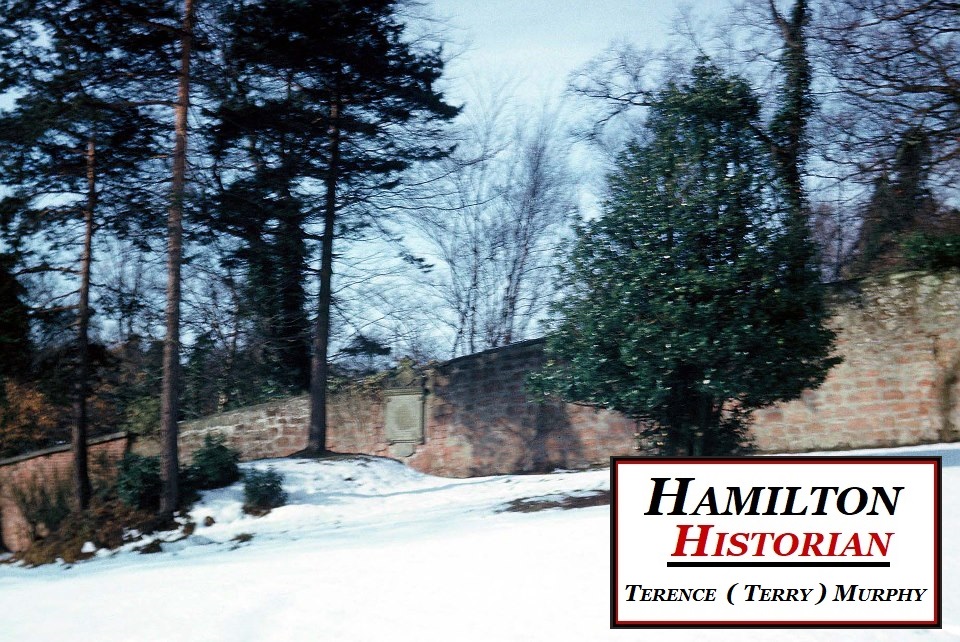 Original Plaque/Memorial which was built into the wall at Earnock Gardens.
Original Plaque/Memorial which was built into the wall at Earnock Gardens.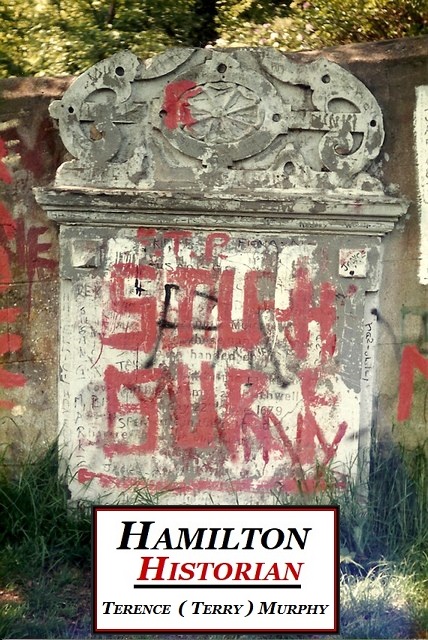 The original stone memorial/plaque vandalized c. 1988.
The original stone memorial/plaque vandalized c. 1988.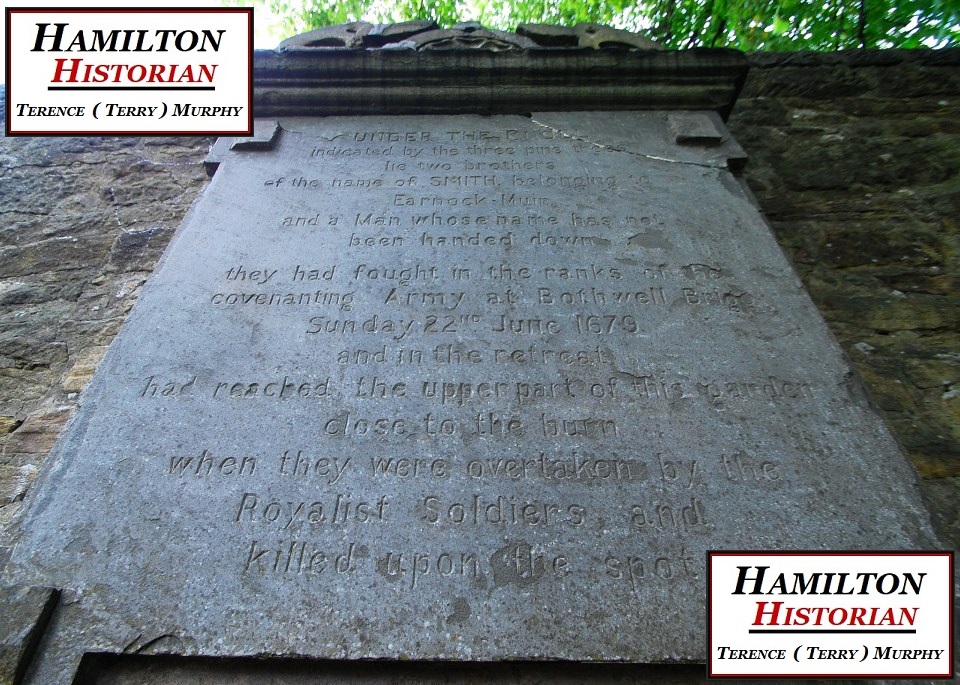 The original stone memorial/plaque at Hamilton’s Old Parish Churchyard.
The original stone memorial/plaque at Hamilton’s Old Parish Churchyard.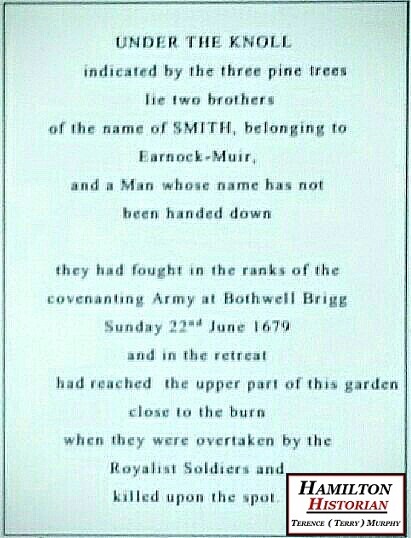 Original memorial/plaque inscription.
Original memorial/plaque inscription. Lady Patricia Watson, The Late Sir Simon Watson Bt, Lord Lieutenant of Lanarkshire and Provost at memorial unveiling c.2008.
Lady Patricia Watson, The Late Sir Simon Watson Bt, Lord Lieutenant of Lanarkshire and Provost at memorial unveiling c.2008.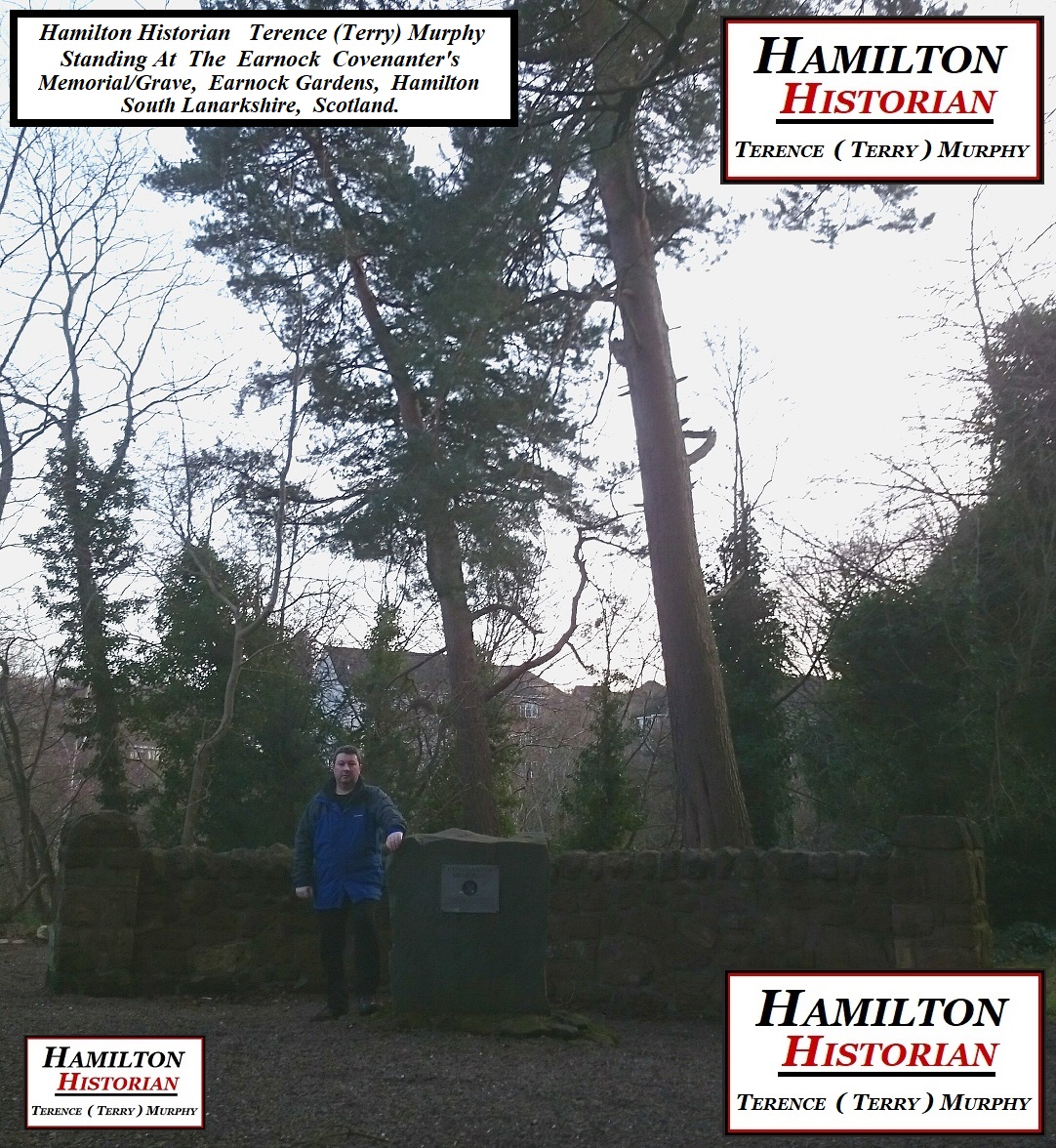 Hamilton Historian Terence (Terry) Murphy At The Earnock Covenanter’s Memorial c.2019.
Hamilton Historian Terence (Terry) Murphy At The Earnock Covenanter’s Memorial c.2019.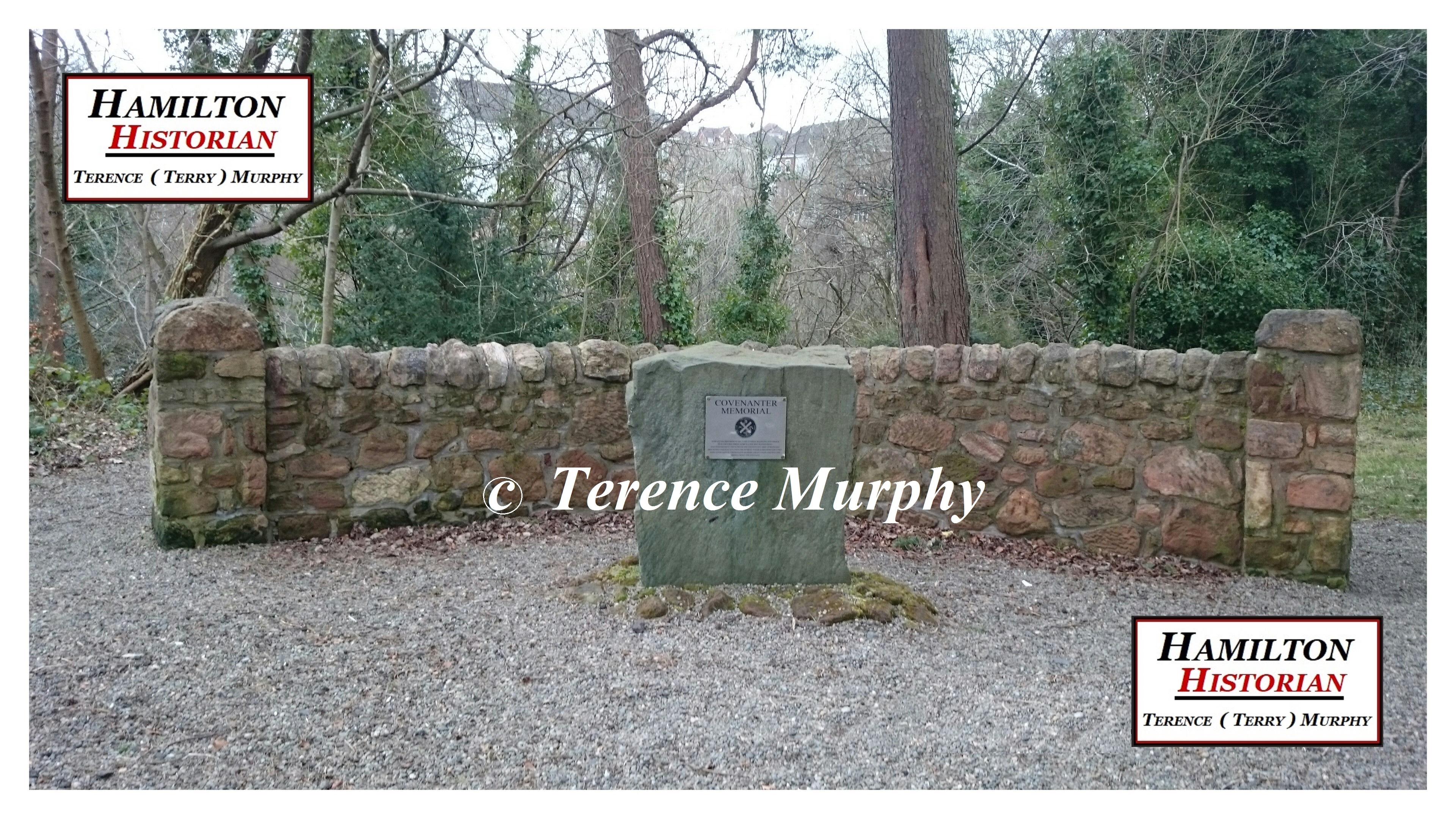 Earnock Covenanter’s Memorial c.2016.
Earnock Covenanter’s Memorial c.2016.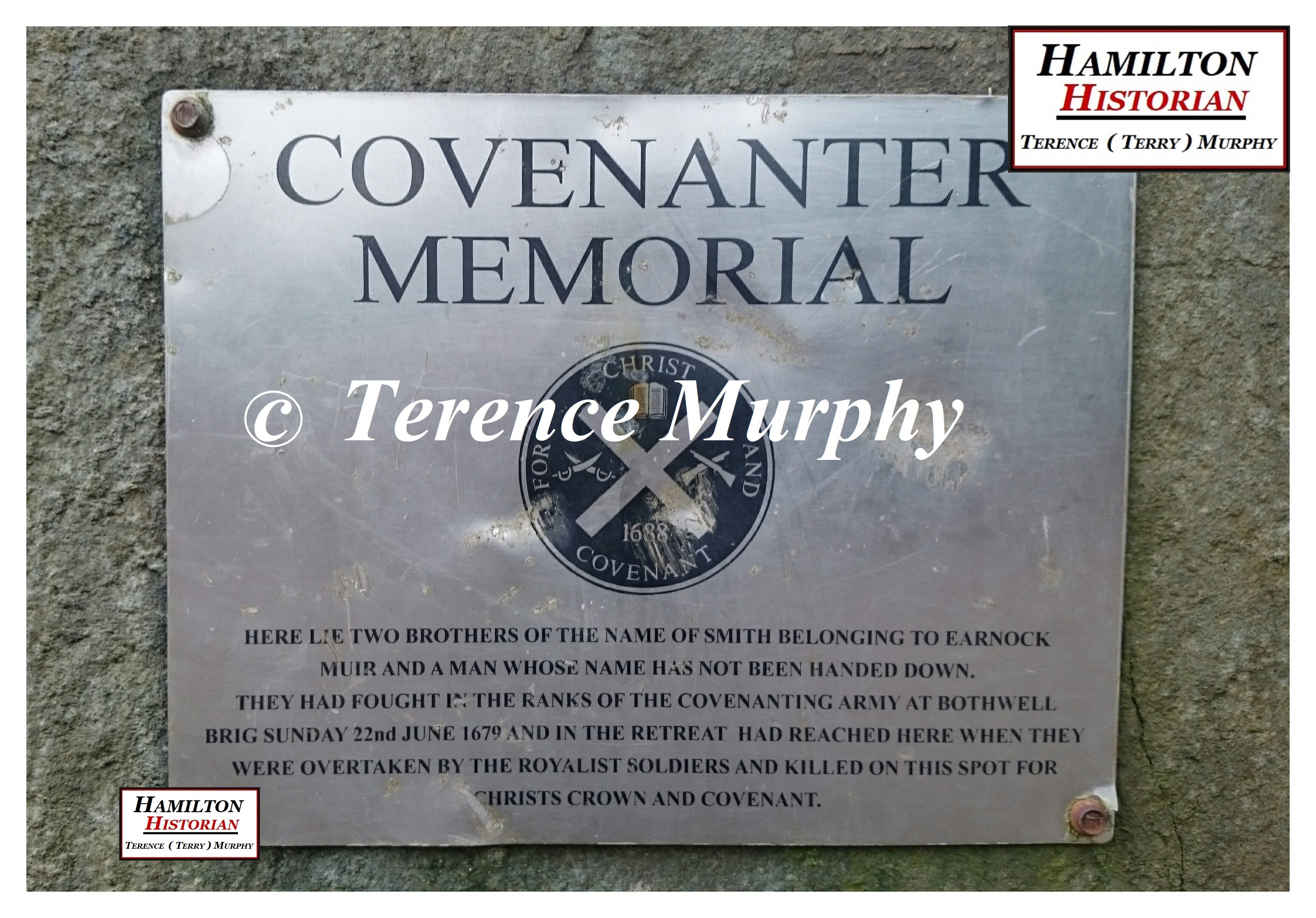 Plaque Inscription details.
Plaque Inscription details.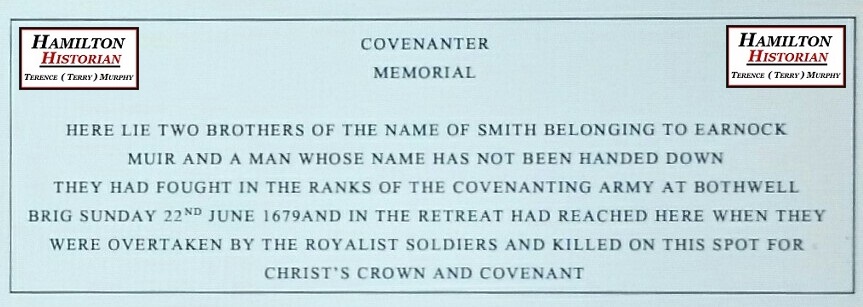 Plaque inscription details.
Plaque inscription details. View of the memorial with full view of Scots Pine trees from the front.
View of the memorial with full view of Scots Pine trees from the front.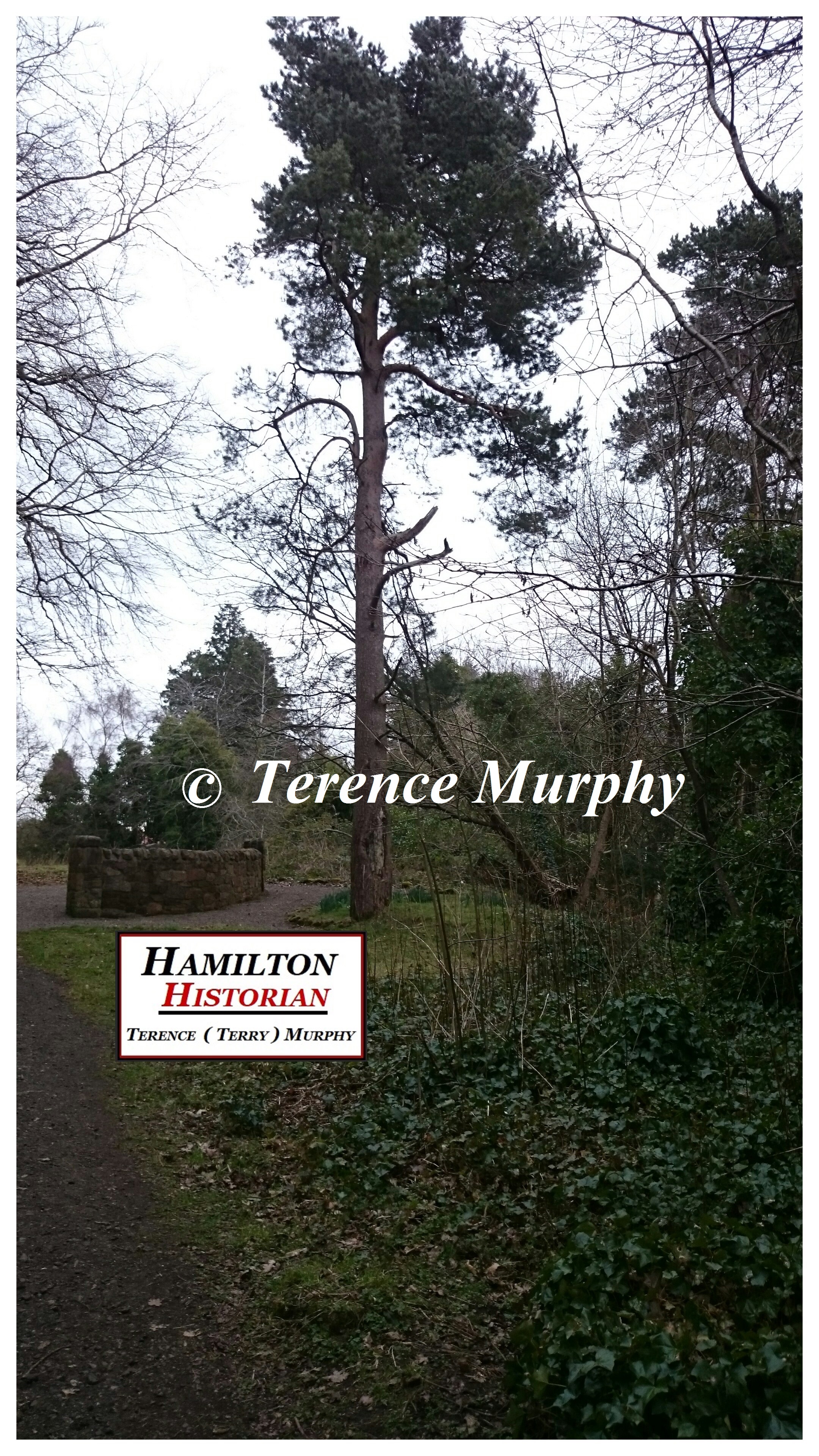 In this view from behind the memorial you can see the mound/knoll which marks the grave where the Covenanter’s are buried. In recent years a Scots Pine sapling was planted to replace another one of the trees that had blown over.
In this view from behind the memorial you can see the mound/knoll which marks the grave where the Covenanter’s are buried. In recent years a Scots Pine sapling was planted to replace another one of the trees that had blown over.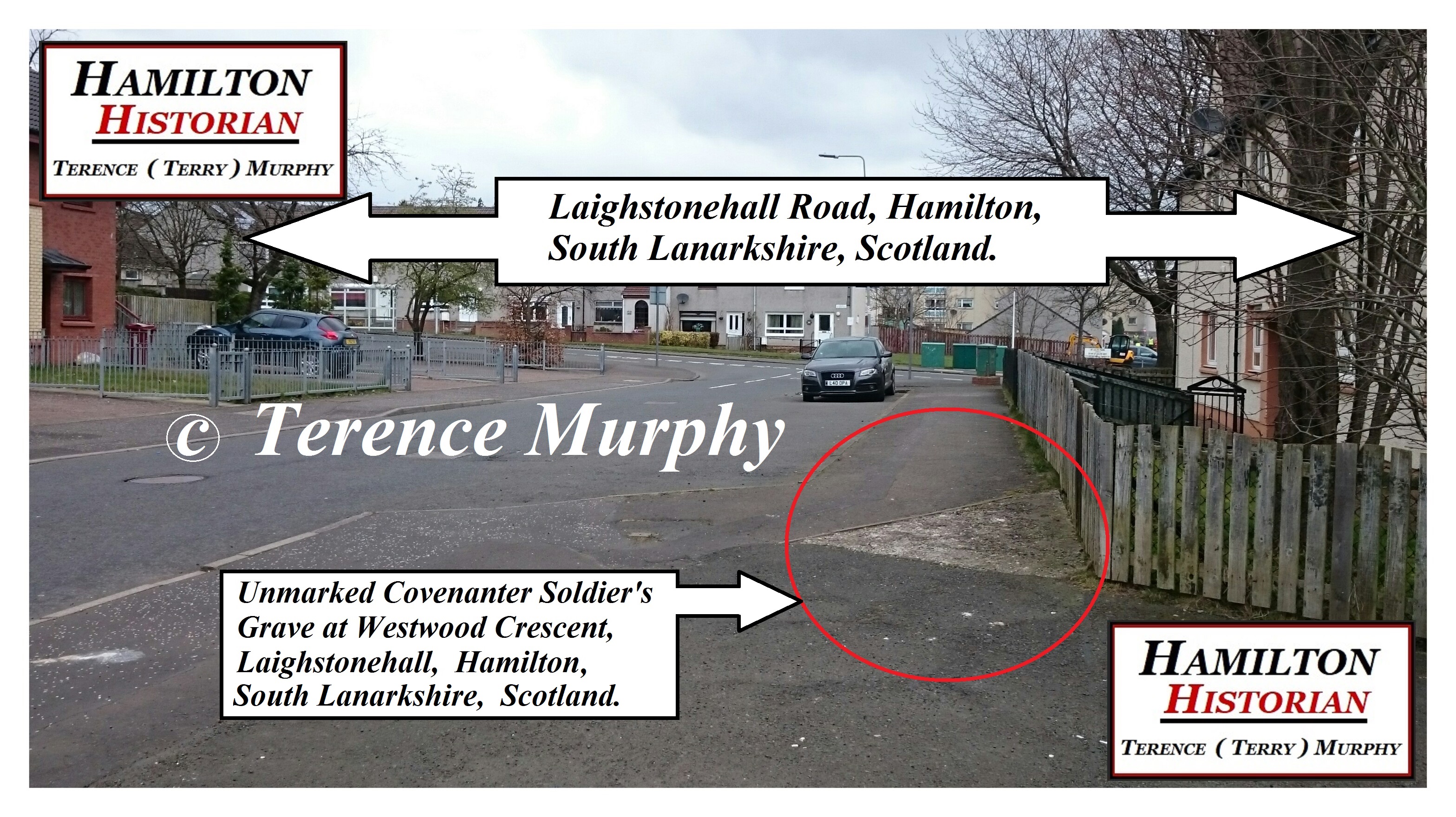 Location of Unmarked Covenanter’s Grave at Laighstonehall, Hamilton, Lanarkshire. During the 1980’s the cement cap was embeded with pebbles. The area where the grave is located is circled in red in the photo c.2016.
Location of Unmarked Covenanter’s Grave at Laighstonehall, Hamilton, Lanarkshire. During the 1980’s the cement cap was embeded with pebbles. The area where the grave is located is circled in red in the photo c.2016. Ordnance Survey Map Clipping Showing Location Of Martyr’s Grave Location Circled In Red. Map Survey c.1858, publication c.1864.
Ordnance Survey Map Clipping Showing Location Of Martyr’s Grave Location Circled In Red. Map Survey c.1858, publication c.1864.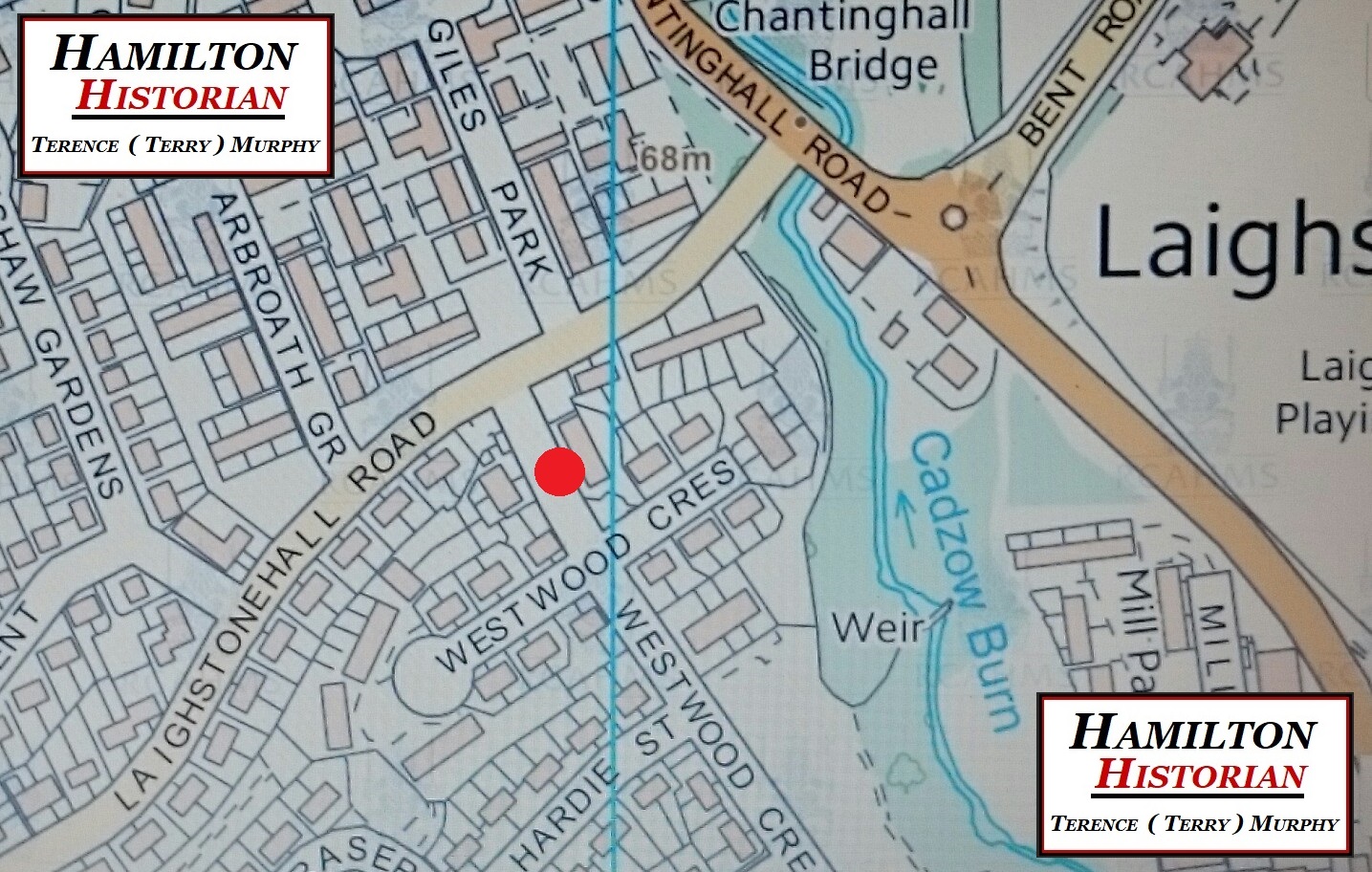 Present day Street map clipping showing location of grave marked by red dot.
Present day Street map clipping showing location of grave marked by red dot. Earnock House c.1889.
Earnock House c.1889.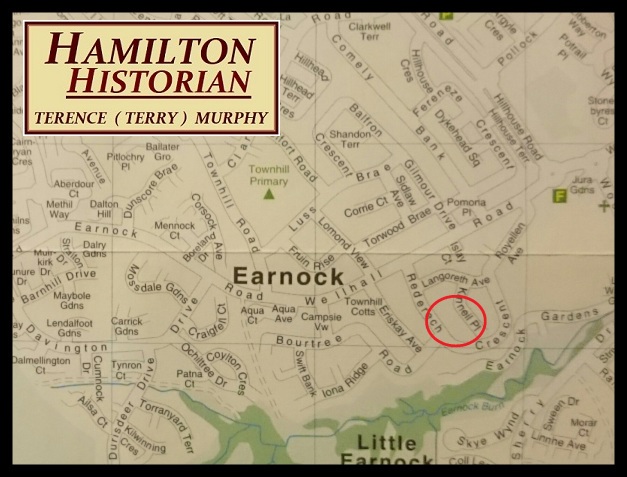 The area circled red in the above map clipping indicates the approximate location of the former Earnock House. Which is now the top end of Rederech Crescent in the Earnock Housing Estate, Hamilton , South Lanarkshire.
The area circled red in the above map clipping indicates the approximate location of the former Earnock House. Which is now the top end of Rederech Crescent in the Earnock Housing Estate, Hamilton , South Lanarkshire. Earnock House before extentions/additions were built c.1877.
Earnock House before extentions/additions were built c.1877.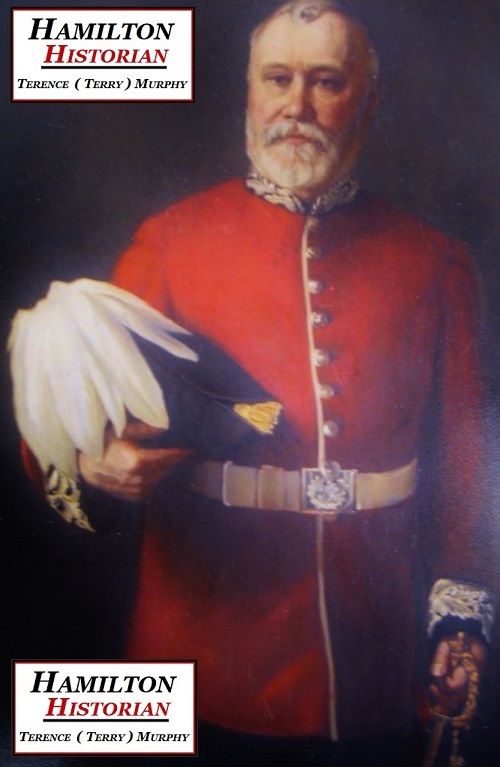
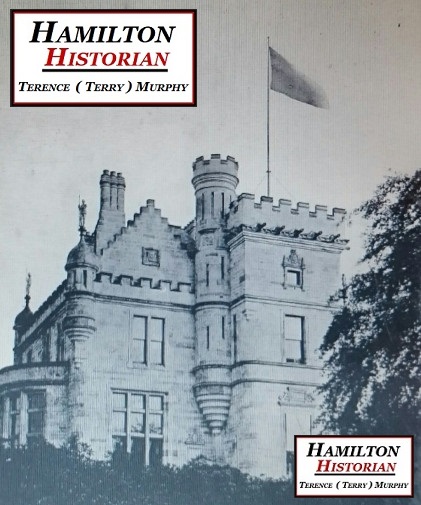 The “Margaret” Tower addition completed c.1881, this photo c.1889.
The “Margaret” Tower addition completed c.1881, this photo c.1889.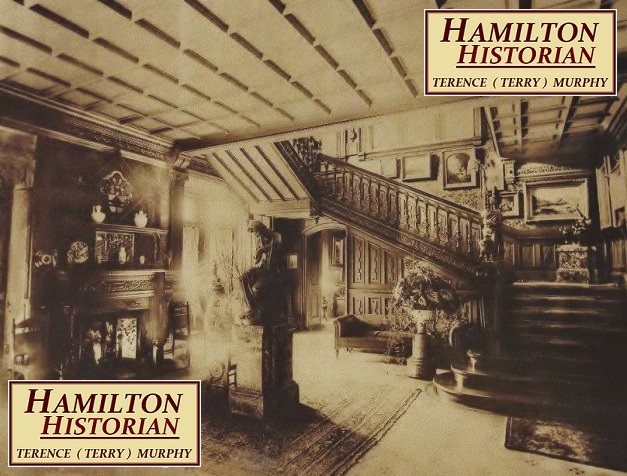 Earnock House Entrance/Hallway c.1889.
Earnock House Entrance/Hallway c.1889.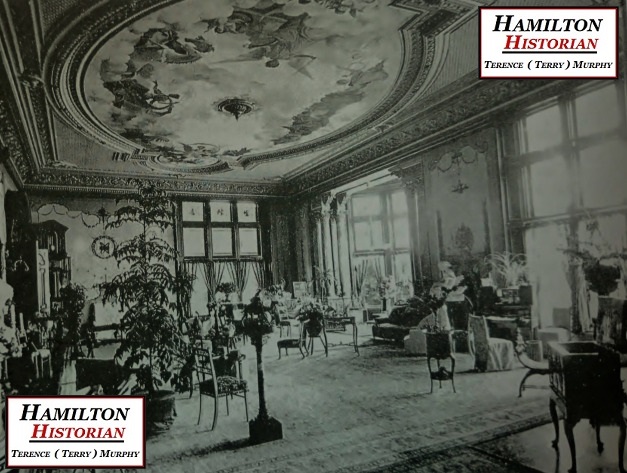 Earnock House Drawing Room c.1889.
Earnock House Drawing Room c.1889.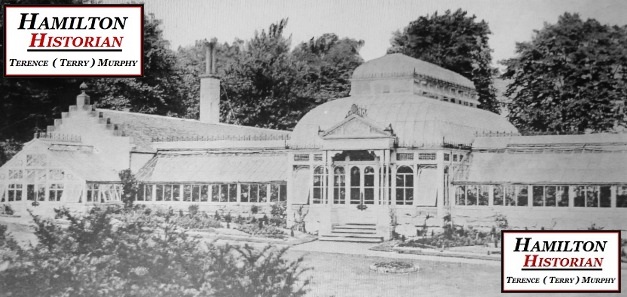 Glasshouse at Earnock Built c.1881 This photo c.1888.
Glasshouse at Earnock Built c.1881 This photo c.1888.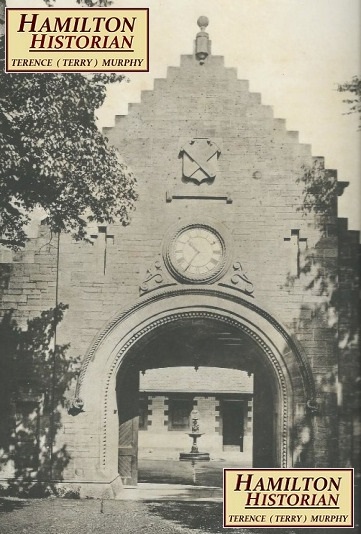 This photo of the stables c.1889.
This photo of the stables c.1889.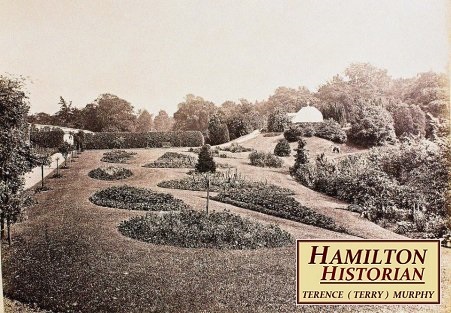 This photo of Earnock Gardens c.1877. The grounds of the Earnock Estate also had a tennis court, bowling green and a golf course which was developed at a later date.
This photo of Earnock Gardens c.1877. The grounds of the Earnock Estate also had a tennis court, bowling green and a golf course which was developed at a later date. Hamilton Historian. Terence (Terry) Murphy. Sitting next to the Sisters of Scio statue c.2015.
Hamilton Historian. Terence (Terry) Murphy. Sitting next to the Sisters of Scio statue c.2015.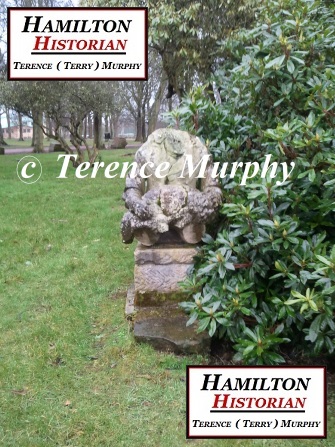 The Gentle Shepherd.
The Gentle Shepherd.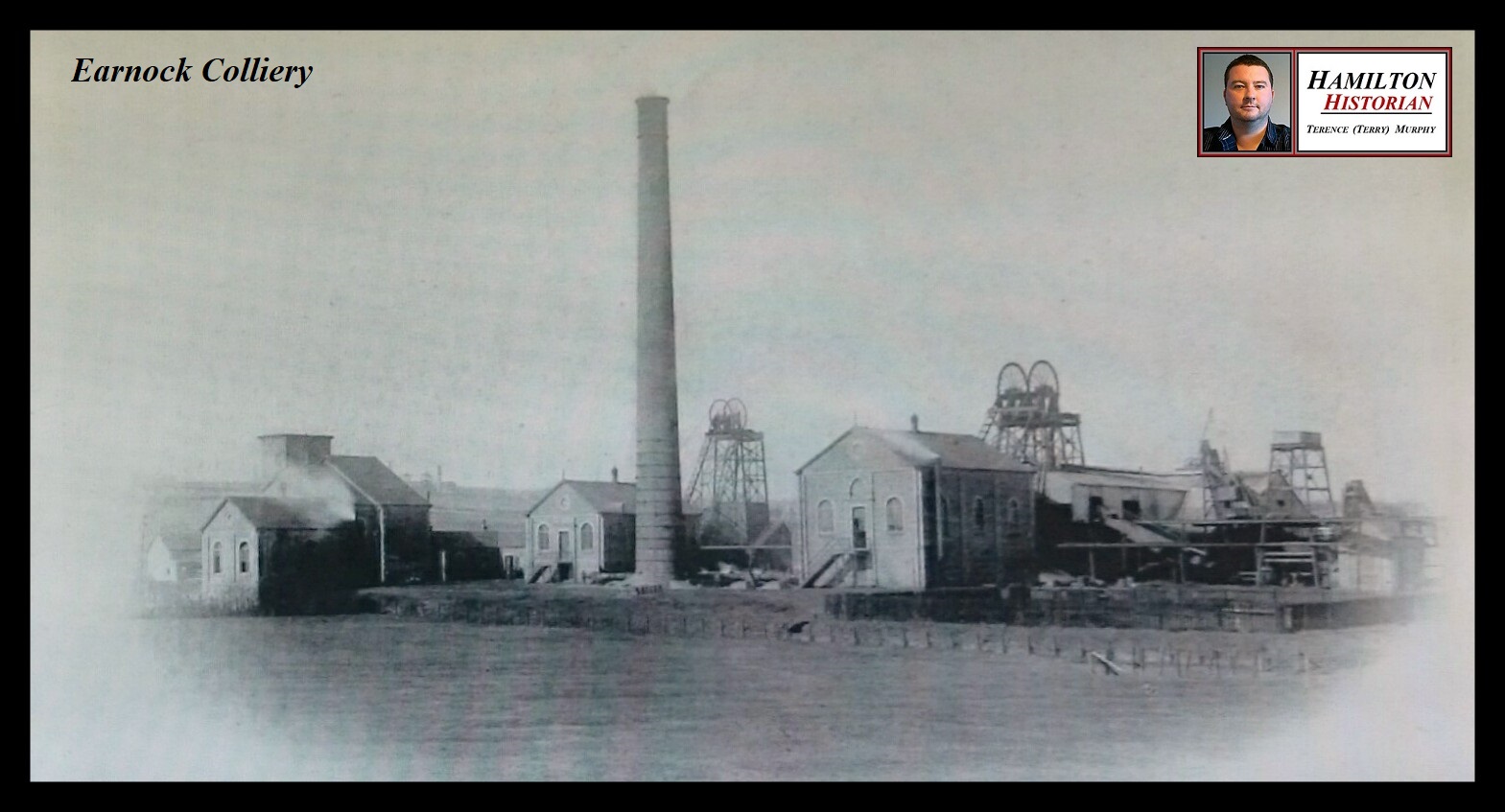 Earnock Colliery.
Earnock Colliery.

